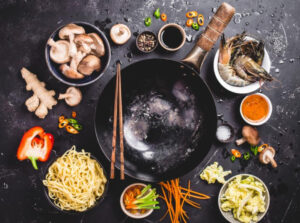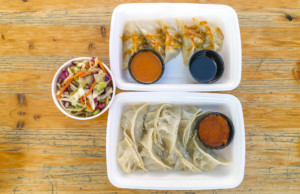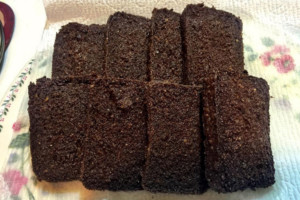 Many people start a new diet without understanding it fully. As a result, they are unable to harness the full potential of the diet’s benefits and are more likely to make mistakes that impede progress.
Many people start a new diet without understanding it fully. As a result, they are unable to harness the full potential of the diet’s benefits and are more likely to make mistakes that impede progress.
And who could blame them? There are an overwhelming number of different diets and health plans circulating around, so it’s easy to get mixed up.
Take the keto diet. Its popularity has skyrocketed in recent years, but this low-carb high-fat eating strategy isn’t exactly intuitive. Especially if you remember the low-fat and nonfat dieting trends of the 1990s, it may seem strange to eat fat to burn fat. But that’s actually how ketogenic eating works!
Read on to clear up common misconceptions about the keto diet and understand the facts before getting started.
The Keto Diet – What is it and how it works
Also known as the ketogenic diet, low-carb high-fat, low-carb diet, and so on. The focus is to cut down on carbohydrates in order to change the way your body converts food into energy.
Our body have been built to survive on carbohydrates, and the metabolism turns those carbs into a type of sugar called glucose for energy. Any leftovers of those carbs get stored as glycogen.
 On keto, the body doesn’t get enough carbs to run on, so it must switch to burning an alternative fuel: fat.
On keto, the body doesn’t get enough carbs to run on, so it must switch to burning an alternative fuel: fat.
Although it’s commonly confused with the Atkins diet, for keto your protein intake should be moderate (not high). So you get most of your nutrients and energy from healthy fats (think olive oil, nuts, avocado) and low-carb vegetables. To get a better idea of the types of food to eat for keto, PlanKetogenic has a great guide for beginners.
What is Ketosis?
 Ketosis is a metabolic state in the body where it starts burning fat instead of carbs for energy. As as a result, you lose weight. It is a natural process that forces the body to rely on fats for energy when the intake of carbohydrates is low.
Ketosis is a metabolic state in the body where it starts burning fat instead of carbs for energy. As as a result, you lose weight. It is a natural process that forces the body to rely on fats for energy when the intake of carbohydrates is low.
The prime goal of a ketogenic diet is to flip the switch so the body burns fat all day long instead of carbs. During ketosis, the body produces ketones from the breakdown of fats in the liver. These are responsible for many of the benefits of ketogenic eating that go beyond just losing weight.
The Ketones
Ketone molecules are produced from fats in the liver as an alternate fuel source for the body and brain when there is limited glucose. These molecules carry a number of benefits, such as lasting energy, fewer cravings, and higher brain power and alertness. Optimal ketone levels in the body are known to offer many health benefits along with weight loss. People on a keto diet may enjoy enhanced physical and mental performance, improved triglyceride levels, better insulin sensitivity, and stabilized blood sugar levels.
Optimal ketosis can be achieved through dietary nutrition, but to get there you need the essential macros, or macronutrients.
The Macros
Fats, protein, and carbohydrates are the three primary macronutrients found in food. These are also known as macros. When starting on a ketogenic diet, you have to figure out how much you should eat and what is your ideal daily intake of each macronutrient. These numbers are different for each individual. You can use a keto calculator to get precise information, or speak directly with a doctor or dietitian.
A Keto Diet Meal Plan
The keto meal plan focuses on low carbs, moderate proteins, and higher fats. Most people typically have 20 to 50 grams of carbs in a ketogenic diet plan. The lower the carbohydrate intake, the faster you can reach ketosis and stay in that phase.
In order to take control of how much and what kinds of foods you’re eating, most people need to write out a detailed meal plan that clearly states what you’ll eat for breakfast, lunch, dinner and snacks (and an occasional dessert!). This way you can plan out how many grams of carbs, proteins, and fats you’re eating each day, and make sure you’re staying within your macro limits.
Keto Food Prep
Going ketogenic is a great opportunity to learn how to cook and prepare meals using whole, fresh ingredients. For example, that means making tomato sauce from tomatoes, garlic, onions, and spices instead of buying it ready-made.
Why? Because industrialized food often contains added sugars, which means extra carbs. They’re also often pumped full of additives like starches, vegetable oils, colors, flavors, and emulsifiers. Ultra-processed foods are unhealthy for everyone, whether or not you’re trying to limit carbs.
So what ingredients can you whip together to make keto meals? You can find zillions of keto recipes online, but essentially, you’ll plan a diet based on keto-friendly foods such as non-starchy vegetables, eggs, fatty fish, beef, venison, pork, chicken, and turkey. You can add full-fat dairy and cheese products along with nuts and seeds.
Some foods to avoid while on a keto diet include baked goods like bread, sugary foods, grain products, pasta, starchy vegetables, certain alcoholic beverages, and sweetened drinks. High glycemic fruits such as grapes, bananas, and citrus and beans and legumes should also be avoided.
If you’re not used to spending much time in the kitchen, check out our simple cooking tips.
Important First Step
The food we eat has an enormous impact on our health. Before beginning a keto diet or making any major change to your eating regimen, it is essential that you speak with your doctor to examine the pros and cons it may have for someone in your unique life situation.


